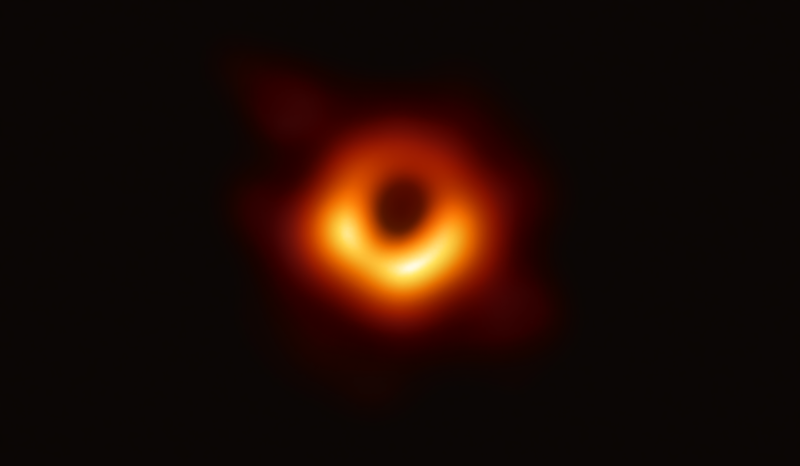Professors and students in the University of Maryland’s astronomy department celebrated the release of the first image of a black hole Wednesday.
The black hole, 6.5 billion times bigger than the sun, is about 55 million light-years away from Earth in the Messier 87 galaxy.
“For me, these not only reveal the universe’s natural wonders, but also demonstrate the power of human imagination and ingenuity in understanding and measuring them,” said Andrew Harris, a professor and chair of the astronomy department.
To generate the image published Wednesday, an international team of researchers analyzed data captured in April 2017, using eight telescopes around the world synchronized by atomic clocks. Researchers overlaid the data from each telescope to create a virtual telescope — the Event Horizon Telescope — the size of Earth.
The project used a technique called “very-long-baseline interferometry,” which relies on measuring radio waves that interact more with other types of light instead of the Earth’s atmosphere.
“It is really interesting that we were able to get a picture of not only the black hole but the stuff around it, too,” said Valentina Petroni, a sophomore astronomy and physics major.
[Read more: UMD astronomers worry golf course development would worsen light pollution]
A black hole forms when a massive star — about three times larger than the sun — collapses in on itself since the star doesn’t have enough material left to generate energy. Although most people think of gravity as a force that large objects, like Earth, exert on smaller objects, like an apple, gravity is a force that pulls two objects of any size closer to each other.
As the density of matter within the collapsing star approaches infinity, gravity’s force becomes overwhelming, sucking in all matter and energy around it so that time and space become obsolete.
“I was so excited when I saw it because I study black holes at the center of galaxies,” said Vivian Carvajal, a junior astronomy and physics major.
The modern idea of black holes stems from works from shortly after Albert Einstein published his theory of general relativity in 1915. The image released last week provides more concrete data to support this theory. The black hole’s outline is circular — exactly as Einstein predicted.
“At the moment, the results confirm what we already know about black holes, but we hope that more detailed work will give us new insights,” said M. Coleman Miller, a professor and co-director of the Joint Space-Science Institute, a partnership between the University of Maryland and NASA that studies black holes.
Since April 2017, another telescope was added to the collaboration and there’s been more data to measure. Researchers are still analyzing this newer data to better understand black holes, including how they change over time.
The National Science Foundation has granted over $28 million to fund the Event Horizon Telescope project. Last month, however, President Donald Trump proposed to reduce the NSF’s budget by 12 percent in 2020.
“Seeing the image reminded me of the giddy feeling I had as a boy when I first learned about black holes,” said Miller, who has been studying astronomy for more than 30 years.



